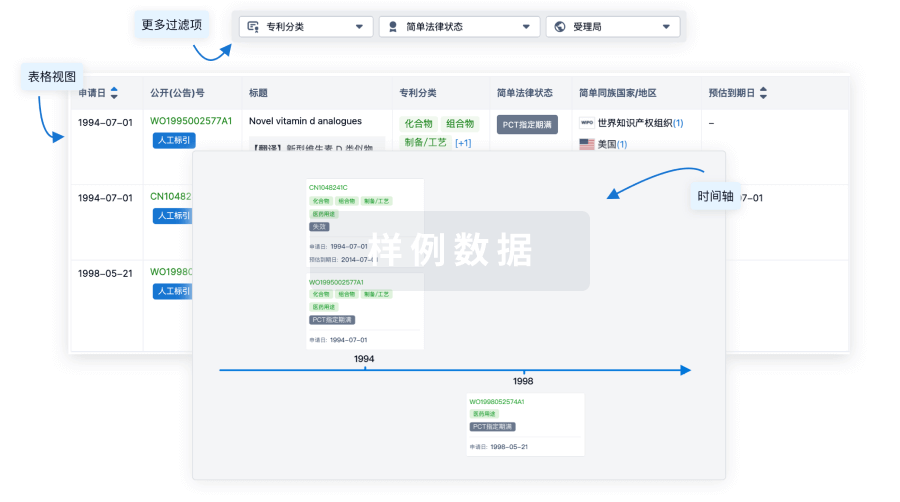更新于:2024-12-05
GluN2C/D subunit-selective antagonists(Emory University)
更新于:2024-12-05
概要
基本信息
药物类型 小分子化药 |
别名- |
作用机制 GRIN2C 抑制剂(glutamate ionotropic receptor NMDA type subunit 2C inhibitors)、GRIN2D 抑制剂(glutamate ionotropic receptor NMDA type subunit 2D inhibitors) |
治疗领域- |
在研适应症- |
非在研适应症- |
原研机构 |
在研机构 |
非在研机构- |
最高研发阶段临床前 |
首次获批日期- |
最高研发阶段(中国)- |
特殊审评- |
关联
100 项与 GluN2C/D subunit-selective antagonists(Emory University) 相关的临床结果
登录后查看更多信息
100 项与 GluN2C/D subunit-selective antagonists(Emory University) 相关的转化医学
登录后查看更多信息
100 项与 GluN2C/D subunit-selective antagonists(Emory University) 相关的专利(医药)
登录后查看更多信息
2
项与 GluN2C/D subunit-selective antagonists(Emory University) 相关的文献(医药)2020-01-01·Neuroscience letters4区 · 医学
Postsynaptic GluN2B-containing NMDA receptors contribute to long-term depression induction in medial vestibular nucleus neurons of juvenile rats
4区 · 医学
Article
作者: Wang, Jue ; Zheng, Liang ; Li, Yan-Hai ; Li, Youjun
Medial vestibular nucleus (MVN) neurons are involved in the regulation of eye movements to endure the stability of the image during head movement, and play a critical role in plasticity of the vestibulo-ocular reflex (VOR) during the juvenile period. We have previously shown that the long-term depression (LTD) of synaptic transmission was induced by high frequency stimulation (HFS) and blocked by N-methyl-D-aspartate (NMDA) receptor antagonist D-APV at the vestibular afferent synapses of type-B MVN neurons. In the present study, we used whole-cell patch-clamp recordings in vitro to investigate the subunit composition of these NMDA receptors in the induction of LTD in MVN slices from postnatal 13-16 day rats. We found that LTD induced in type-B neurons of the rat MVN with HFS was blocked by Ro 25-6981, a specific antagonist for GluN2B-containing NMDA receptors. Moreover, the other selective GluN2B-containing NMDA receptor antagonist (ifenprodil) also prevented the induction of LTD. However, bath application of the GluN2A-containing NMDA receptor antagonists (Zn2+ and TCN 201) had no influence on the induction of LTD. Similar results were obtained by exogenously applied two GluN2C/GluN2D-preferring NMDA receptor antagonists (PPDA and UBP 141). Furthermore, presynaptic NMDA receptor subunits are not necessary for vestibular LTD. These results suggest that the induction of LTD by HFS in vestibular afferent synapses of type-B MVN neurons requires postsynaptic GluN2B-containing NMDA receptors, but not GluN2A-containing NMDA receptors or GluN2C/GluN2D-containing NMDA receptors.
Selective Enhancement of the Interneuron Network and Gamma-Band Power via GluN2C/GluN2D NMDA Receptor Potentiation
Article
作者: Camp, Chad R ; Akins, Nicholas ; Zhang, Jing ; Epplin, Matthew P ; Yu, Kuai ; Liotta, Dennis ; Traynelis, Stephen F ; Perszyk, Riley E ; Xing, Hao ; Akins, Nicholas S ; Epplin, Matthew ; Benke, Tim A ; Liotta, Dennis C ; Banke, Tue G ; Yuan, Hongjie
Abstract:
N-methyl-D-aspartate receptors (NMDARs) comprise a family of ligand-gated ionotropic glutamate receptors that mediate a slow, calcium-permeable component to excitatory neurotransmission. The GluN2D subunit is enriched in GABAergic inhibitory interneurons in cortical tissue. Diminished levels of GABAergic inhibition contribute to multiple neuropsychiatric conditions, suggesting that enhancing inhibition may have therapeutic utility, thus making GluN2D modulation an attractive drug target. Here, we describe the actions of a GluN2C/GluN2D-selective positive allosteric modulator (PAM), (+)-EU1180-453, which has improved drug-like properties such as increased aqueous solubility compared to the first-in-class GluN2C/GluN2D-selective prototypical PAM (+)-CIQ. (+)-EU1180-453 doubles the NMDAR response at lower concentrations (< 10 µM) compared to (+)-CIQ, and produces a greater degree of maximal potentiation at 30 µM. Usingin vitroelectrophysiological recordings, we show that (+)-EU1180-453 potentiates triheteromeric NMDARs containing at least one GluN2C or GluN2D subunit, and is active at both exon5-lacking and exon5-containing GluN1 splice variants. (+)-EU1180-453 increases glutamate efficacy for GluN2C/GluN2D-containing NMDARs by both prolonging the deactivation time and potentiating the peak response amplitude. We show that (+)-EU1180-453 selectively increases synaptic NMDAR-mediated charge transfer onto P11-15 CA1stratum radiatumhippocampal interneurons, but is without effect on CA1 pyramidal cells. This increased charge transfer enhances inhibitory output from GABAergic interneurons onto CA1 pyramidal cells in a GluN2D-dependent manner. (+)-EU1180-453 also shifts excitatory-to-inhibitory coupling towards increased inhibition and produces enhanced gamma band power from carbachol-induced field potential oscillations in hippocampal slices. Thus, (+)-EU1180-453 can enhance overall circuit inhibition, which could prove therapeutically useful for the treatment of anxiety, depression, schizophrenia, and other neuropsychiatric disorders.
Significance Statement:
Interneuron dysfunction and diminished GABAergic inhibition in neocortical and hippocampal circuits remains a prominent molecular hypothesis for neuropsychiatric diseases including anxiety, depression, and schizophrenia. Pharmacological agents that boost GABA receptor function have shown utility in various forms of depression and treating symptoms of schizophrenia. Cortical GABAergic interneurons, unlike their excitatory pyramidal cell counterparts, are enriched for the GluN2D subunit of the NMDA receptor. Thus, GluN2D subunit-selective modulation could be a useful therapeutic tool to enhance local inhibition, improving the prognosis for neuropsychiatric diseases for which interneuron dysfunction is prominent and causal to circuit aberration.
100 项与 GluN2C/D subunit-selective antagonists(Emory University) 相关的药物交易
登录后查看更多信息
研发状态
登录后查看更多信息
临床结果
临床结果
适应症
分期
评价
查看全部结果
| 研究 | 分期 | 人群特征 | 评价人数 | 分组 | 结果 | 评价 | 发布日期 |
|---|
No Data | |||||||
登录后查看更多信息
转化医学
使用我们的转化医学数据加速您的研究。
登录
或

药物交易
使用我们的药物交易数据加速您的研究。
登录
或

核心专利
使用我们的核心专利数据促进您的研究。
登录
或

临床分析
紧跟全球注册中心的最新临床试验。
登录
或

批准
利用最新的监管批准信息加速您的研究。
登录
或

特殊审评
只需点击几下即可了解关键药物信息。
登录
或

标准版
¥16800
元/账号/年
新药情报库 | 省钱又好用!
立即使用
来和芽仔聊天吧
立即开始免费试用!
智慧芽新药情报库是智慧芽专为生命科学人士构建的基于AI的创新药情报平台,助您全方位提升您的研发与决策效率。
立即开始数据试用!
智慧芽新药库数据也通过智慧芽数据服务平台,以API或者数据包形式对外开放,助您更加充分利用智慧芽新药情报信息。
生物序列数据库
生物药研发创新
免费使用
化学结构数据库
小分子化药研发创新
免费使用
